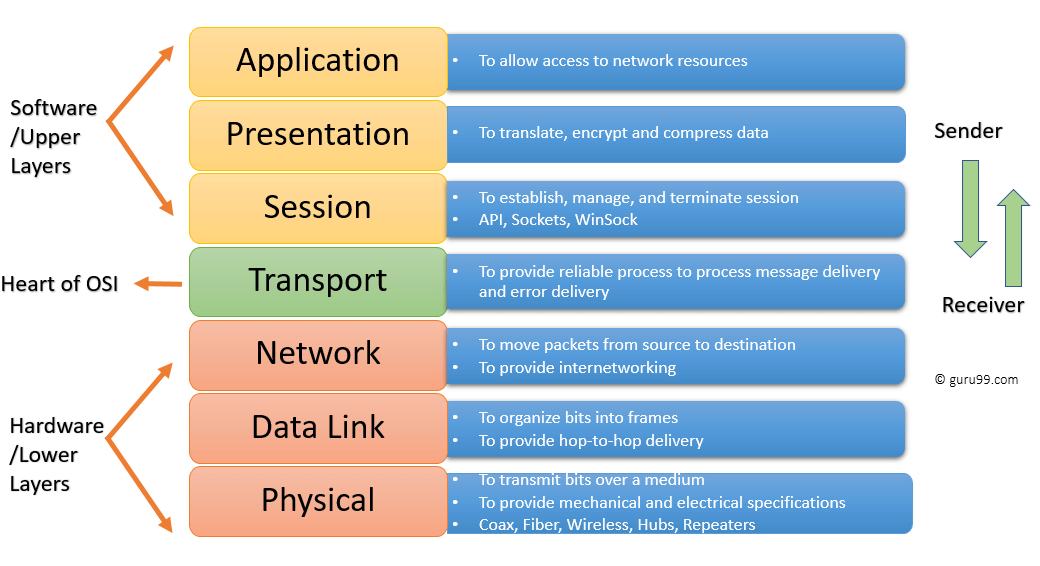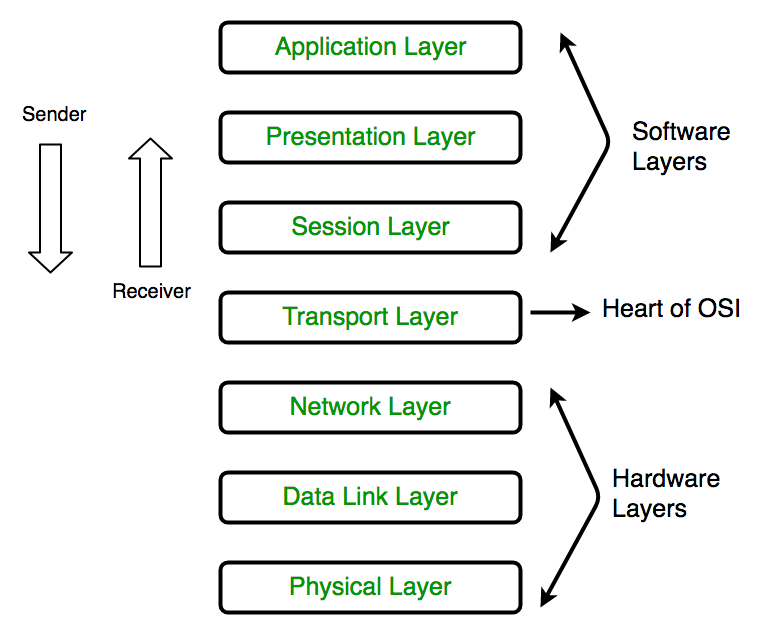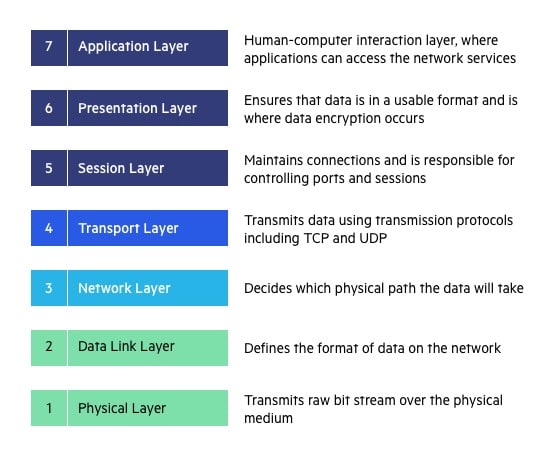Explain the Function of Different Layers of Osi Reference Model
MAC Media Access Control This sub-layer defines how the data packets are placed in media. O The ATM reference model is composed of the following ATM layers.

Osi Model Layers And Protocols In Computer Network
It maintains the physical connection and defines the voltages and data rates.

. This layer defines how networking components access the media and what transmission methods they use. In the OSI reference model the communications between a computing system are split into seven different abstraction layers. Here are the basic functionalities of the Physical layer.
A layer should be created where a different abstraction is needed. There are seven logical layers in the OSI model. 7 OSI Layers and Their Functions in Networking.
Draw osi reference model and. The physical layer contains information in the form of bits. The OSI model does not perform any functions in the communication process.
Physical Layer is the lowest layer of the OSI Model. Open system is a model that allows any two different systems to communicate regardless of their underlying architecture. Each layer defines a set of functionalities.
Physical Data Link Network Transport Session Presentation and. The OSI reference model has 7 layers. This means if layer 2 wants to use the functionality of layer 1 then it will directly invoke the primitive function in layer 1.
The actual work is done by the appropriate SW and HW. To activate maintain and deactivate the physical connection. In the OSI model layers are organized from the most tangible and most physical to less tangible and less physical but closer to the end user.
The OSI reference model is a conceptual model that divides the functions of a communication system into seven layers. OSI layers 5 6 7 are combined into one Application Layer in TCPIP. It activates maintains and deactivates the physical connection.
In OSI model data link layer and physical are separate layers. Everything related to signals is handled here including the transmission of digital bits as electronic signals. The Open Systems Interconnection OSI model breaks down the problems involved in moving data from one computer to another computer.
OSI layers 1 2 are combined into one Network Access Layer in TCPIP however TCPIP does not take responsibility for sequencing and acknowledgement functions leaving these to the. Open Systems Interconnection OSI model categorizes these hundreds of problems to Seven Layers. Data Link Layer It is responsible for the reliable transfer of data frames from one node to another connected by the physical layer.
The lowest layer of the OSI reference model is the physical layer. Each layer abstracts lower level functionality away until by the time you get to the highest layer. It can be used as a blueprint for designing implementing and troubleshooting systems.
OSI Model and its Layers PDF-Download PDF Here. OSI Model Layer 1. There are the seven OSI layers.
It is the lowest layer of the OSI. The interaction between layers in the OSI model. A layer of the TCPIP model is both connection-oriented and connectionless.
OSI is the reference model designed to divide the entire communication operation into multiple processes. It is responsible for movements of individual bits from one hop node to the next. Using this model the functioning of a networking system can be easily explained.
This model divides basic communication functions into seven different layers as shown in the figure below. Explain the different layers of osi model in detail. Explain the all layers of ositcp model with proper diagram.
Layers of OSI model. Each layer should perform a well-defined function. The Data Link Layer is the second layer of the OSI model.
The OSI Reference Model. Functions of each of the layer are described below. Explain how the 7 layers of the osi model relate to each other.
A key difference between the models is that TCPIP is simpler collapsing several OSI layers into one. ATM layer - Combined with the ATM adaptation layer. A list of seven layers are given below.
OSI model use two separate layers physical and data link to define the functionality of the bottom layers. The OSI model simply define which tasks need to be done and which protocols will handle those tasks at. The OSI model provides a framework for the discussion design and implementation of data communication protocols.
TCPIP uses only one layer link. Physical Layer Layer 1. Each layer has different functions.
It also provides physical addressing. This layer has two sub-layers. The main functions of each of the layers are as follows.
The main functionality of the physical layer is to transmit the individual bits from one node to another node. It is responsible for transmitting individual bits from one node to the next. Physical Layer Its function is to transmit individual bits from one node to another over a physical medium.
It is responsible for the actual physical connection between the devices. The OSI model characterizes computing functions into a universal set of rules and requirements in order to support interoperability between different products and software. All the details and inner workings of all the other layers are hidden from the end user.
Or you can say logical demarcation of functionalities for achieving computer network communication. A layer in Open Systems Interconnection OSI model is a portion that is used to categorize specific problems. The Physical layer is also called as the Layer 1.
The functionalities of these layers are as follows. The seven layers of an OSI Model include Physical Data Link Network Transport Session Presentation and Application. O Plane management manages and coordinates functions related to the complete system.
OSI model the transport layer is only connection-oriented. This is just an introduction we will cover each layer in details in the coming tutorials. Explain how the communication takes place between layers of osi model.
Here two end communication devices are named Application A. Following are the functions performed by each layer of the OSI model. Physical layer - Analogous to the physical layer of the OSI reference model the ATM physical layer manages the medium-dependent transmission.
Functions of Different Layers. The principles that were applied to arrive at the seven layers can be briefly summarized as follows. To define voltages and data rates needed for transmission.
Layers In the OSI Model. Explain the functions of various layers in iso-osi reference model.

Osi Model Full Form In Computer Networking Geeksforgeeks

No comments for "Explain the Function of Different Layers of Osi Reference Model"
Post a Comment